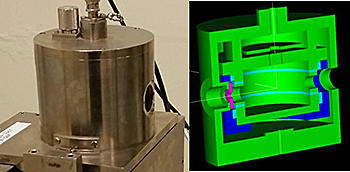Summary
The fundamental photon and charged particle interaction data and the radiation transport methods, pioneered and developed at NIST to calculate the penetration of electrons and photons in matter, are used in most of the major Monte Carlo simulation codes today. These codes are used for computations in theoretical dosimetry ranging from establishing primary radiation standards at NIST to predicting radiation fields and their effects in applied situations.
Description

Monte Carlo simulation of radiation transport is an accurate tool for design, optimization and insight in situations both accessible and inaccessible to measurement. The Dosimetry Group applies these simulations to problems in radiation metrology, protection, therapy and processing. Our programs continue to develop and use interaction data and Monte Carlo calculations for the understanding and refinement of our measurement standards and for the many applications of ionizing radiation with which we are involved. The applications of Monte Carlo simulations may encompass the whole problem from source to detector. A past example was the development of a computational model of the NIST's Clinac 2100C medical accelerator. This source model, in conjunction with measurements of the physical source in a water phantom, was used for an international intercomparison of absorbed dose to water standards. This same source model was also used with a computational model of our new brass-walled ionization chamber in the computation of wall corrections for this chamber in order to directly realize air kerma in high energy photon fields typical of those used in non-intrusive cargo inspection systems. Currently, this source model is being used to examine the adequacy of the shielding in the new home of the Clinac in the H wing of Building 245. A recently concluded effort in this simulation program was directed towards describing the standard beam qualities provided by NIST at x-ray energies and their measurement via free-air chambers.

